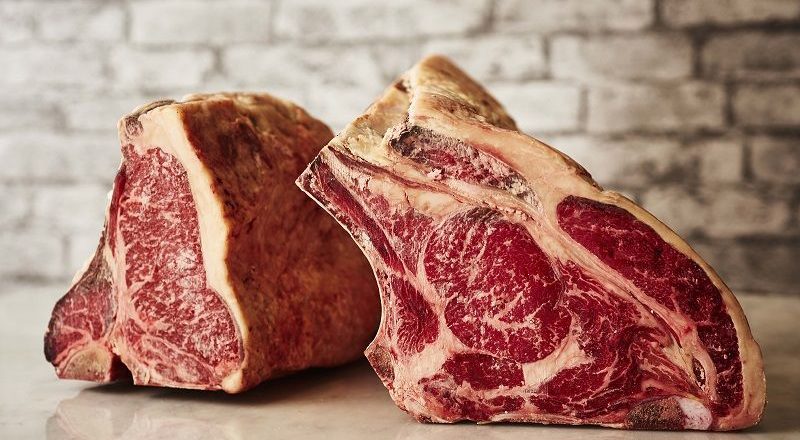
Meat, a deposit of micronutrients useful for human health
By modulating the nutrition of animals in farms it is possible to improve the content of micronutrients in meat. Thus, it becomes a “key functional food”.
Meat is an extraordinary food, for its very dense nutritional value and for the possibility of modifying it naturally, to enhance and transform it into real functional food, that is, capable of positively influencing physiological functions of the body and reducing the risk of pathologies linked to the diet. By modulating animal nutrition, it is possible to improve the content of micronutrients in meat, with a consequent positive impact on human health.
#Meat is a functional #food, capable of positively influencing physiological functions of the #body and reducing the risk of #pathologies linked to the #diet. Click To TweetResearch in recent years has focused on trying to make foods more nutritious and healthier, and meat is an optimal matrix for the designing of functional products. Already rich in bioactive compounds, which in the past were mistakenly thought to be a quality of plant foods only, meat is the optimal source of nutraceutical substances intervening in a concrete and real way in the prevention of diseases, improving general health.
In particular, the aim was to satisfy consumer requests by decreasing the content of saturated fat and cholesterol and increasing that of unsaturated omega 3 long-chain PUFA fatty acids, with proven beneficial effects on health. The same thing happened for the levels of minerals, especially selenium and iodine, which have a key role in the well-being of the body and are the most susceptible to a deficiency in the population.
By intervening ad hoc on the formulation of animal feed, the content of selenium and iodine increases considerably in muscle and consequently in meat, obtaining an average increase of iodine in beef and poultry meat up to 76%, compared to others minerals such as iron and zinc, whose levels are highly variable between meats of different species – and currently do not appear to depend on their concentrations in feed.
By intervening on the formulation of #AnimalFeed, the content of #selenium and #iodine increases in muscle and consequently in #meat, obtaining an increase of iodine in #beef and #poultry up to 76%. Click To TweetDifferent strategies are possible to optimize the nutritional composition of meat: for example, by incorporating conjugated linoleic acid (CLA) already in milk for calves, this antioxidant compound is then found in the meat with proven anti-tumor and anti-diabetic effects and protection from cardiovascular disease, from obesity and osteoporosis, with important positive impacts on our health. In adult ruminants, the same result is obtained through dietary supplementation with oils and oilseeds, while in chickens and pigs with the addition of CLA to the feed.
Also, by integrating the diet of calves with selenium and vitamin E, the concentration of these important antioxidants in the muscles and therefore in meat is increased, significantly improving the lipid stability and the final quality of the product. Initially, meats were not the main source of vitamin E, while today thanks to the dietary fortification that has increased their content, they have become a discrete source, with poultry second in the ranking of the best food sources of α– tocopherol.
At present, thanks to these strategies it is possible to produce meat from pigs and chickens with selenium content 10 times higher and according to a study, 175 g of meat obtained from pigs fed with feed integrated with 0.4 mg Se/kg can cover the daily selenium requirement recommended for adults.
The same mechanism for minerals such as calcium and magnesium or for the important vitamin D, the lack of which is of concern worldwide: meat obtained from cattle fed with a diet enriched with vitamin D is characterized by a higher concentration, also increasing the tenderness and red color of flesh. The addition of magnesium to pig feed also improves the color of meat, reduces the oxidation of fats, and the loss of liquids during cooking.
Today it is possible to produce #meat from #pigs and #chickens with a #selenium content of 10 times higher. Click To TweetCalcium and magnesium in cold cuts are used as a strategy to replace and reduce the use of salt in percentages up to 50%. To obtain meat with less cholesterol, copper can be added to chicken feed and CLA to pig feed, or during the production of cold cuts using fermenting bacteria that metabolize cholesterol, reducing its content in the final product.
Considering that 86% of what is used for feeding livestock is not edible for humans, farmed animals are a great resource, as efficient converters of low or no nutritional quality food for humans in noble proteins and micronutrients essential for us; the intelligent use of new classes of mineral and vitamin nutrients, rigorously based on scientific evidence and capable of optimizing the physiological processes and well-being of our farmed animals, has the effect of obtaining meat with an even higher concentration of nutrients: thus meat becomes a “key functional food”, indispensable for covering essential nutritional needs of the entire world population and for health.




